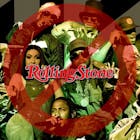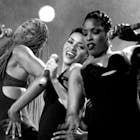Is Rap's Diversity Divisive?
Rap Subgenres: Does Hip-Hop Diversity Have to Be Divisive?
Published Wed, August 10, 2022 at 12:00 PM EDT
"Gangsta rap." "Indie." "Drill." "Conscious Rap." "Crunk." "Trap." "Hyphy." "Pop Rap." "Snap." "Political Rap." "Bass." "Alternative Rap." Some we widely accept as terms. Some others..notsomuch.
After rap music exploded onto the scene in the late 1970s, one of the first widely-recognized subgenres of rap was electro.
The influence of bass music would stretch far and wide across the South, eventually giving way to crunk music. The legacy of southern rap music that moves the party stretches back decades and is a cornerstone of the Dirty South.
A term like “alternative” has never felt effective or accurate—but it’s understandable why it’s so prevalently used.
And as a result, many of them wound up being unfairly branded inauthentic.
Four years after ...COMPTON, former N.W.A. member Dr. Dre would famously take gangsta rap to the pop charts with his solo debut THE CHRONIC.


It's long past time to allow space for all of rap's musical "neighborhoods" to thrive and be celebrated.








